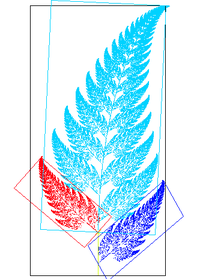
Photo from wikipedia
ABSTRACT The combination of point and linear features can strengthen the robustness and accuracy of the registration of image and light detection and ranging (LiDAR) point clouds. The key point… Click to show full abstract
ABSTRACT The combination of point and linear features can strengthen the robustness and accuracy of the registration of image and light detection and ranging (LiDAR) point clouds. The key point of registration is the establishment of a geometric transformation model. This paper proposes a quadratic-constraint-based geometric transformation (QCGT) line model, in which combines point and linear features, and simultaneously takes the orientation and position of the line into account. The coordinates of points and lines uniformly described by line model in the same mathematical framework are used to construct a coplanarity equation. The data set of International Society for Photogrammetry and Remote Sensing (ISPRS) test project is used, and the robustness and efficiency of QCGT is verified by progressive experiments. The experimental results have shown that QCGT is feasible and can achieve more reliable results than the traditional method. The geometric constraints of the line model are enhanced due to the quadratic constraint, solving the problems of the different mathematical representation of geometric features and reducing the complexity of transformation.
Journal Title: Remote Sensing Letters
Year Published: 2018
Link to full text (if available)
Share on Social Media: Sign Up to like & get
recommendations!